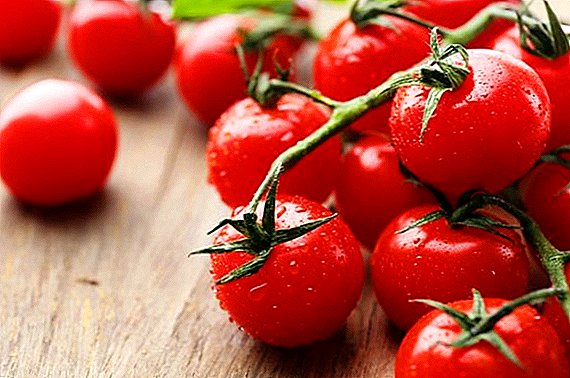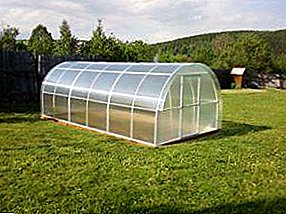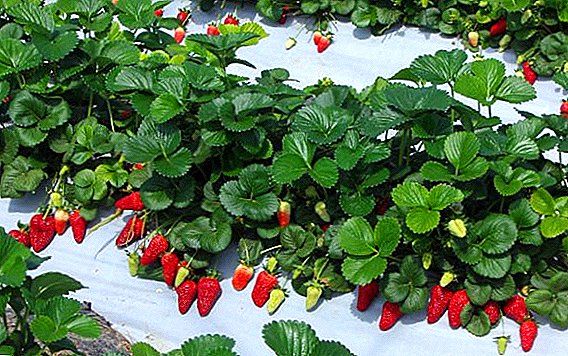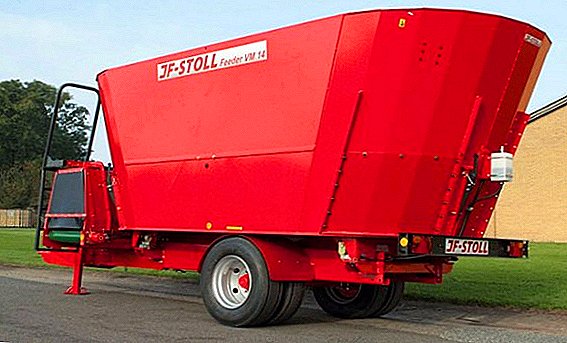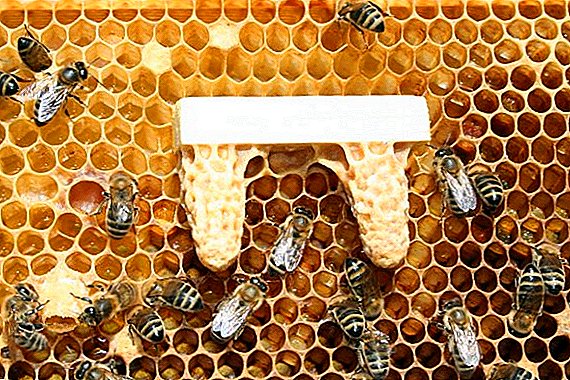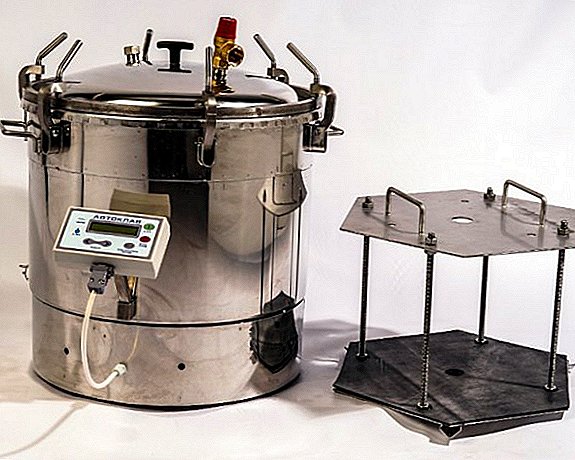 Autoclaves have long been used in many areas: medicine, cosmetology, and various industries, but the majority are familiar with devices for home preservation. Given the quality of the products cooked in them, such popularity is not surprising. Many are interested in buying or creating a similar mechanism for home use, so today we will discuss the advantages and disadvantages of purchased and home-made options.
Autoclaves have long been used in many areas: medicine, cosmetology, and various industries, but the majority are familiar with devices for home preservation. Given the quality of the products cooked in them, such popularity is not surprising. Many are interested in buying or creating a similar mechanism for home use, so today we will discuss the advantages and disadvantages of purchased and home-made options.
What is an autoclave?
Autoclave - hermetically sealed apparatus for heat treatment. In cooking, it is used for cooking meat, fish, vegetable, and fruit canned foods at high (4.5-5.5 atm.) Atmospheric pressure and heated to 120 ... 125 ° C. At the same time, products can be prepared both in glass and tin containers.
Did you know? The prototype of the autoclave originated in 1679 thanks to the French mathematician and inventor Denis Papen.
The principle of operation and the structure of the device
The device of the autoclave is quite simple, it is based on the well-known laws of physics. In accordance with them, each liquid has its own boiling point, after reaching which further heating is impossible. For water, under normal conditions, this point is 100 ° C. Reaching this mark, water becomes steam and in this form leaves the heating zone. Active steam formation is called boiling. Steam begins to appear at a temperature of 90 ° C, and the closer to 100 ° C, the more steam. If you boil water for a long time, it will all evaporate. However, if the pressure is increased in the heating zone, then the boiling point will also increase and when it reaches 100 ° C, the water will still turn into steam, but most of it will retain the appearance of the liquid.  It is on this principle that autoclaves work:
It is on this principle that autoclaves work:
- The water in them is heated to the state of formation of steam.
- Due to the closed shape of the tank, steam cannot leave the limits of the autoclave and increases the pressure in it.
- When the pressure rises, the water boils more slowly, keeps the liquid state longer, however, the temperature in the container rises.
As a result, the device has a temperature in excess of 100 ° C, which is detrimental to various harmful bacteria and microorganisms. At the same time, canned food is prepared under the influence of steam heat, which significantly speeds up the process and improves their taste.
Types of autoclaves
Autoclaves can be classified according to several criteria:
- depending on the form: vertical, horizontal, column;
- based on the location of the working chamber: rotating, swinging, immovable.
Learn how to save grapes, cabbage, pumpkin, potatoes, apples, watermelon, carrots, cucumbers and onions for the winter.
Electric
The heating of these devices provide built-in heating elements, powered by the network. The advantages of electric models include:
- accelerated cooking process;
- the presence of a thermostat that automatically maintains the desired temperature in the tank;
- convenient lid mechanism, to close which it is enough to turn one screw;
- mobility. The device can be installed at any place on your own.
 On sale today there is a wide range of autoclaves. Among the popular budget models include:
On sale today there is a wide range of autoclaves. Among the popular budget models include:- "Baby Stainless. ECU" 22 l;
- "Baby El. Nerg." by 22 liters;
- "GO ST." by 22 liters;
- "Conservative" 46 liters.
Gas
Gas autoclaves today are more affordable because they lose popularity in electric. They work from gas and electric stoves, they are also allowed to use on fires.  Gas devices are sold in various volumes and models, among which are:
Gas devices are sold in various volumes and models, among which are:
- "Conservative" (14 l);
- classic autoclave (17 l) ТМ "Good heat";
- "Baby GazNerzh-U" (22 l).
Did you know? The first canned food appeared in ancient Egypt. They consisted of fried ducks in olive oil, which were placed in earthen vessels of two halves, fastened with resin.
The advantages of cooking blanks in autoclaves
For a newcomer to canning, working with an autoclave seems troublesome and long. But this impression arises from the lack of practical experience. It is worth trying only once - and it will become clear that the advantages of such a method are more significant than its disadvantages.
Canned for the winter mushrooms, chanterelles, cherries, peas, cucumbers, tomatoes, blueberries, green beans, cherries and watermelon.
And the list of advantages at home autoclaves is impressive:
- it takes 30-40 minutes to load the device: fill the jars and put them in a container, and then the cooking process goes without human participation;
- at the same time it is prepared from 14 cans with a volume of 0.5 l (in the smallest model) and more;
- cooking at temperatures above 100 ° C destroys pathogenic bacteria and spores, led by the causative agent of botulism;
- since the pests have been destroyed, the shelf life of finished products is extended several times;
- thanks to the same high temperature, foods are cooked faster, while preserving far more vitamins and minerals than with standard cooking or baking;
- since canned food is stewed in its own juice in a hermetically sealed container, this cooking method is recognized as the most useful.

Important! The cost of buying a mechanism pays off in 1-2 seasons.Autoclaving in the autoclave diversifies your winter diet with delicious dishes and saves the family budget.
Instructions for use
Before you start, follow these rules:
- wash the jars before filling, but do not sterilize;
- filling the container with food, leave 2-3 cm of stock so that the products can increase in volume during the heating process;
- the banks are first placed in the cassette (if available in the device configuration), and then the cassette is lowered into the autoclave;
- it is allowed to put the container in several rows, but strictly one container to another;
- while filling the water, control its level: it should be 3-4 cm higher than the top row of the container, but not reach the edge of the autoclave chamber by 5-6 cm;
- close the lid tightly.
Make hot smoked smokehouse and wood chips for smoking with your own hands.
How to heat
Banks put only in water heated (up to 60 ° C) water. If in a container we already have hot vegetables and fruits according to the recipe, then the water temperature in the autoclave should be at least 70 ... 90 ° С. After installing the cans and closing the lid, begin heating to the desired temperature. 
Important! The degree and time of sterilization depend on the product and the volume of the container.
The instructions for each autoclave are their indicators, but the average temperature for some categories of canned food can be found in the table:
| Name of canned food | Volume of cans, l | Sterilization temperature, ° C | Duration of sterilization, min. |
| Canned meat | 0,35 | 120 | 30 |
| 0,50 | 120 | 40 | |
| 1,00 | 120 | 60 | |
| Canned poultry | 0,35 | 120 | 20 |
| 0,50 | 120 | 30 | |
| 1,00 | 120 | 50 | |
| Canned fish | 0,35 | 115 | 20 |
| 0,50 | 115 | 25 | |
| 1,00 | 115 | 30 | |
| Canned vegetables | 0,35 | 100 | 10 |
| 0,50 | 100 | 15 | |
| 1,00 | 100 | 20 | |
| Marinated mushrooms | 0,35 | 110 | 20 |
| 0,50 | 110 | 30 | |
| 1,00 | 110 | 40 |
 The quality of the final product and its further preservation depend directly on compliance with the temperature regime and the required cooking time.
The quality of the final product and its further preservation depend directly on compliance with the temperature regime and the required cooking time.Safety measures when working with an autoclave
The autoclave works with high temperatures, so it is important to know how to properly organize its work in terms of safety:
- Always keep to the thermal level specified in the recipe. To exceed it is permissible only by 2 ° C, not more;
- the time of sterilization (directly cooking the product) is considered from the moment the temperature in the autoclave is reached, which is necessary for cooking, and not from the moment the apparatus is turned on or the container is installed;
- fish and meat canned food is preferably prepared in cans up to 2 liters;
- if you sterilize middle-aged lamb or beef, extend the process by 15-20 minutes;
- River fish is also prepared for 15-20 minutes longer than indicated in recipes for sea fish;
- adhere to the required temperature and duration of cooking;
- At the end of the process, turn off the heat and start cooling the unit. For gas devices, for this you need to drain the water through the faucet, and for the electric ones - to wait for the sound signal;
- also for safety, relieve pressure with check valve.
- pull seaming in the cassette. When it cools to room temperature, then you can free the container from it.
Did you know? The ancient Romans became the first canned product wine. Senator Marc Portia Cato the Elder in one of his works described the method of canning a beverage for a whole year.
Autoclave DIY
The autoclave is a fairly simple design, so many craftsmen make it with their own hands at home. If you are interested in a similar idea, then pay attention to the following instructions. 
Selection of the necessary parameters of capacity
The first thing you need to decide on the capacity for the future device. A reliable and inexpensive option in this case is the used propane bottle. It has a suitable cylindrical shape, and the wall thickness is over 3 mm, which allows it to withstand great pressure. As alternatives also consider:
- industrial fire extinguishers;
- milk cans;
- steel pipes with thick walls.
In this case, the last two options will have to strengthen the bottom, otherwise the unit will not survive long-term sterilization. As for the volume, everything is individual here: a 14-liter can fit in a 24-liter bottle with 0.5 liters or 5 liter capacity, a 50-liter bottle (which will be discussed further) includes 8 cans of 2-liter each.
Search for the necessary tools and accessories
In addition to the future camera of the autoclave, we will also need additional components and tools for their installation. The work will be useful:
- Bulgarian;
- drill;
- welding inverter.
 Prepare from the details:
Prepare from the details:
- small sheet of low carbon steel (10 mm) for the cover;
- for the neck - a piece of pipe F159 with a thickness of 5 mm;
- 3 mm sheet or steel strip for the role of a future pallet;
- if you plan to measure pressure and temperature (recommended), then take the nozzles for the pressure gauge and thermometer;
- 8 pieces M12 bolts with nuts;
- directly manometer and thermometer;
- safety valve.
Important! To create excess pressure in the body will need to embed the valve for the car chamber.
The main stages of manufacturing
Now - the actual assembly process itself:
- Place the blank billet vertically and get rid of the old crane (if you cannot take it out, dismantle it to the maximum).

- Next, just in case, you need to fill the billet to the top with water to get rid of possible gas residues.
- Then cut the top "cap" along the seam on the cylinder and make openings for the valve, manometer and fitting for a thermometer in it.
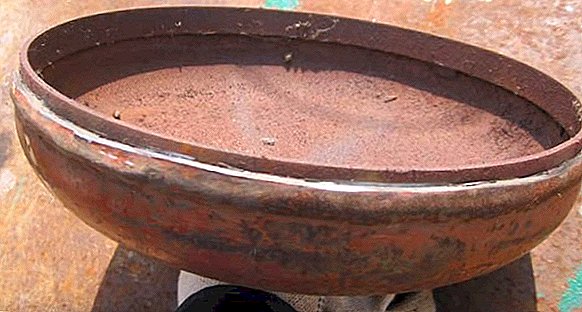
- Now put the prepared steel bottom on the bottom and fix it by welding.
- Making the neck: cut out of the F159 pipe ring with a height of 40 mm and a diameter with a 2-liter jar. Clean it up, flatten it on the vice if necessary. For a snug fit, check its flatness on the glass.
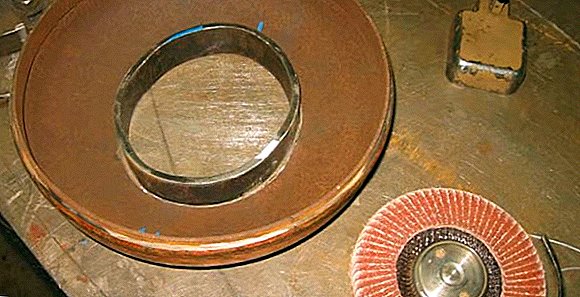
- Lower the neck on the bottom of the previously cut "cap", draw its outline and then cut the desired hole grinder.
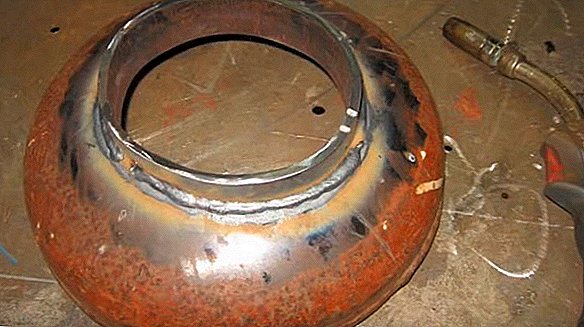
- Insert the collar ring and weld it to the “cap” on both sides.
- Now you need to make a cover. It should pass into the opening of the neck. Bottom of it to secure the rubber gasket and the ring of a strip of 3 mm, to make it easier to center the cover.
- Send all the components on the sandblasting, and then weld the very "cap" back to the cylinder.
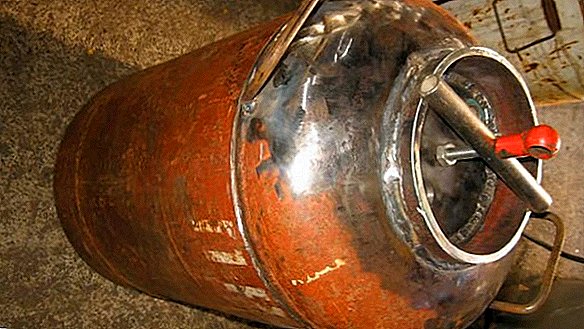
- Weld handles and nozzles to the tank.
- Place a safety valve on the left, a pressure gauge and a thermometer on the right.

Our autoclave is ready, now it is necessary to test it before work. To do this, coat all the joints with soap and water and raise the pressure inside to 8 atm. If there are bubbles, it means that welding is of poor quality, it is necessary to finish it. It is better to carry out the first sterilization in the new autoclave on the street as the strong smell is possible.
Smoke fish at home.An autoclave is a great way to save seasonal vitamins for a longer period and save your money. It does not require much time for maintenance, and the results of his work exceed all expectations. Even if you can preserve a little, you still take the opportunity to ease the process, just take a model with a small volume. Having tried once the products prepared in an autoclave, you will not return to the usual canning or store counterparts.
Video: DIY autoclave
Reviews

Homemade canned food - delicious. But for me meat is something like sushi from fugo fish. I do not know how to do it myself.
I eat only my mom's canned food. (Pickled cucumbers and tomatoes) And mushrooms are just the ones that I collected.









